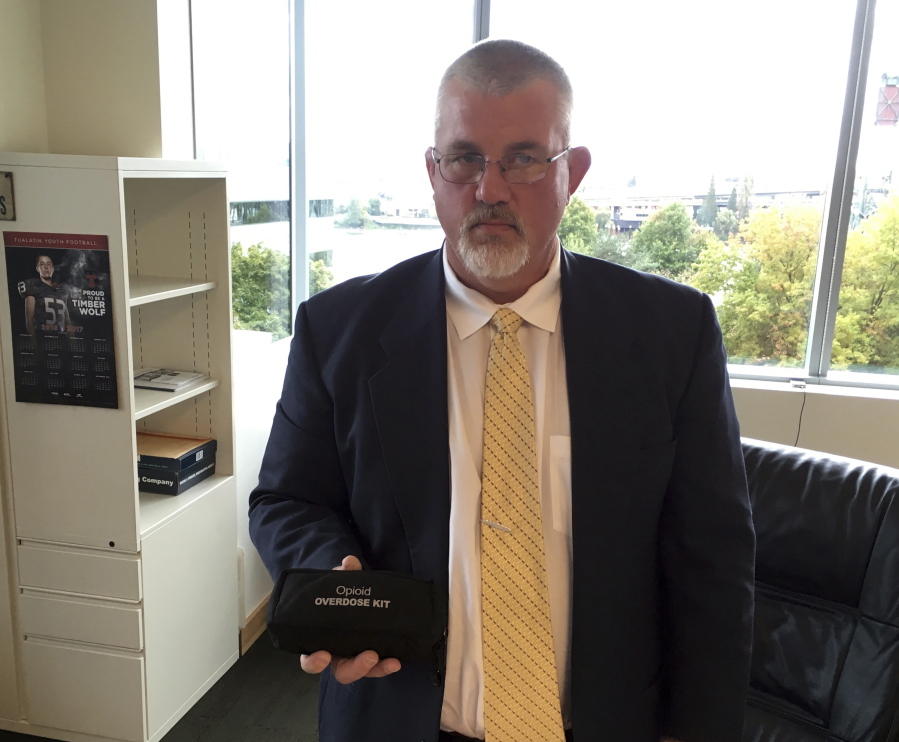PORTLAND — The DEA’s top agent in Oregon is very worried about the opioid epidemic hitting the state, so just about every time he steps out into the street, he carries something to combat it.
Cam B. Strahm, assistant special agent in charge of the Drug Enforcement Administration, said the use of both heroin and prescription pills is spiking, and that Fentanyl, which is many times stronger than heroin, presents an even greater threat.
When he goes out, Strahm packs a black zippered bag, looking like a travel toiletry kit, which contains Narcan. When administered through the nose, it can save a life by reviving a person who has overdosed.
“If I see a kid collapse in front of me, I want to be able to give him a second chance,” Strahm said in an interview with The Associated Press on Oct. 5.
Overdoses from prescription opioid pain relievers and heroin killed more than 28,000 people in the United States in 2014, a record number, according to the federal Centers for Disease Control and Prevention. Since 1999, the number of opioid overdose deaths has nearly quadrupled.
In Oregon, opioid overdose deaths reached 6.826 per 100,000 population in 2014, the Oregon Health Authority said, a more than threefold increase from 2000.
The flood of opioid pills comes from unscrupulous pain-management clinics and doctors who overprescribe for profits, Strahm said.
Concurrent with the increase in overdoses is a sharp rise in Mexico of poppy cultivation. Acting DEA Deputy Administrator Jack Riley told a U.S. Senate subcommittee on May 26 that cultivation increased 160 percent between 2013 and 2015, with growing of the heroin-producing crop centered primarily in the state of Guerrero and the “Golden Triangle,” which includes the states of Chihuahua, Sinaloa and Durango.
Most of the heroin in Oregon — black tar and brown powdered — comes from Mexico via California, Strahm said. Much of it is distributed in Oregon by residents with family ties to villages in Mexico, often the same villages, said Strahm, who was raised near Portland and who previously served in the DEA’s offices in Houston and Jacksonville.
In the interview, Strahm declined to comment on whether a wall at the U.S.-Mexico border could cause a drop in heroin smuggling. Republican presidential nominee Donald Trump has vowed to build a wall along the border if he wins the election.
“I am apolitical, and I don’t comment on politics,” Strahm said. “We have to attack this epidemic before we lose more people than we’re currently losing to overdoses.”
Strahm has agents trying to curtail drug availability, bring traffickers to justice, and destroy drug-trafficking organizations.
And with his small black bag, he is ready to personally intervene to save a user. “It certainly goes with me most places,” he said.



